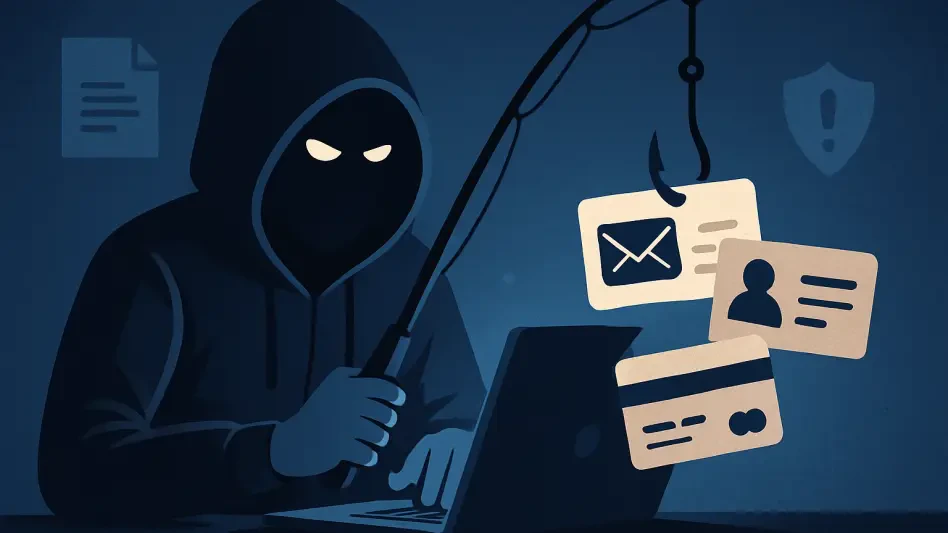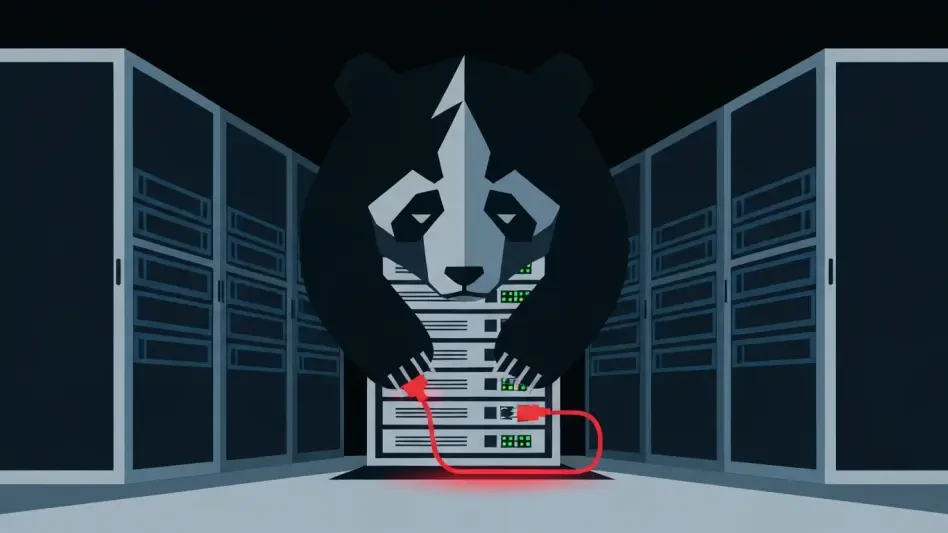In a digital landscape where trust is often exploited, phishing attacks have surged to unprecedented levels, with millions of credentials stolen globally each year, posing a severe threat to both individuals and organizations. One alarming statistic stands out: over 5,000 Microsoft 365 credentials have been compromised across 94 countries in a short span by a single operation known as RaccoonO365. This highlights the critical role of phishing kits—pre-packaged, user-friendly tools that enable even novice cybercriminals to launch sophisticated attacks. These kits have become a cornerstone of modern cybercrime, fueling credential theft on a massive scale. This analysis delves into the emergence of phishing kits as a dominant force, explores their real-world impact through specific cases, incorporates expert insights on the escalating threat, examines future implications for cybersecurity, and concludes with reflections on necessary actions to combat this trend.
The Rise of Phishing Kits in Cybercrime
Surge in Availability and Adoption
Phishing kits have seen a dramatic increase in availability, often offered through subscription-based models that lower the barrier to entry for aspiring cybercriminals. Data reveals that operations like RaccoonO365 have facilitated the theft of thousands of credentials in a matter of months, targeting users across nearly 100 countries. Reports from Microsoft’s Digital Crimes Unit (DCU) underscore that these kits are now among the fastest-growing tools for credential theft, driven by their ease of use and widespread distribution on platforms like Telegram, where communities of over 850 members actively trade such services.
The commercialization of cybercrime has transformed the threat landscape, turning what was once a niche skill into a marketable product. These kits are often advertised with promises of high success rates, complete with tutorials and customer support, making them accessible to a broad audience of malicious actors. This trend of democratization means that even those with minimal technical expertise can execute large-scale phishing campaigns, amplifying the overall risk to global cybersecurity.
Real-World Impact and Specific Campaigns
The practical deployment of phishing kits has led to significant damage across various sectors, with RaccoonO365 serving as a prime example of their destructive potential. This group orchestrated a tax-themed phishing campaign that targeted over 2,300 U.S. organizations, exploiting seasonal vulnerabilities to deceive users. Additionally, at least 20 U.S. healthcare entities fell victim to similar attacks, illustrating the indiscriminate nature of these operations and their ability to disrupt critical services.
Technologically, these kits are designed to evade detection, incorporating features such as user-agent filtering and dynamic traffic routing, as noted by researchers at Cloudflare. They often deploy fake Microsoft 365 login pages that mimic legitimate interfaces, tricking users into entering credentials. Beyond capturing passwords, advanced kits also steal session cookies, allowing attackers to bypass multifactor authentication and gain deeper access to compromised accounts.
The ripple effects of these campaigns are profound, often serving as an entry point for more severe threats like ransomware or data breaches. While not every stolen credential results in immediate harm, the sheer volume of compromised data creates a persistent risk, as attackers can exploit this information over time or sell it on underground markets, perpetuating a cycle of cybercrime.
Expert Perspectives on Phishing Kit Threats
Insights from Industry Leaders
Industry experts have raised significant concerns about the accessibility of phishing kits and their role in escalating cyber threats. Steven Masada, assistant general counsel at Microsoft’s DCU, has emphasized that the availability of such tools could lead to an exponential increase in scams, as they empower a wider range of individuals to engage in malicious activities. This perspective highlights a shift in the cybercrime ecosystem, where sophisticated attacks are no longer the domain of elite hackers but are within reach of virtually anyone with a subscription.
Organized Nature of Modern Cybercrime
The commercial structure of cybercrime has evolved into a highly organized marketplace, where phishing kits are marketed with the same professionalism as legitimate software. This trend reflects a troubling reality: cybercrime is now a business, complete with sales pitches, customer feedback, and scalable operations. Experts warn that this commercialization not only increases the frequency of attacks but also complicates efforts to disrupt these networks, as providers continuously adapt to enforcement actions.
Systemic Challenges and Legal Gaps
Addressing the threat of phishing kits requires more than technical solutions; it demands systemic change in how cybercrime is prosecuted globally. Microsoft has advocated for stronger international laws to combat these threats, pointing to the slow pace of cross-border prosecutions and legal loopholes that allow criminals to operate with relative impunity. Masada and others stress the need for governments to align policies and accelerate collaborative efforts, as the borderless nature of cybercrime often outpaces current legal frameworks, leaving significant gaps in enforcement.
Future Implications of Phishing Kits in Cybercrime
Evolving Sophistication of Tools
Looking ahead, phishing kits are likely to become even more advanced, incorporating better evasion techniques and potentially integrating with other forms of malware to amplify their impact. Innovations in artificial intelligence or machine learning could enable these tools to craft more convincing phishing emails or adapt dynamically to user behaviors, making detection increasingly difficult. This trajectory suggests a future where defenders must continuously innovate to keep pace with rapidly evolving threats.
Broader Risks to Global Industries
The implications of phishing kits extend far beyond individual victims, posing substantial risks to organizations across industries worldwide. As these tools facilitate credential theft on a massive scale, they often serve as a gateway to more devastating attacks, such as ransomware, which can cripple entire networks. Sectors like healthcare, finance, and government, which handle sensitive data, are particularly vulnerable, facing not only financial losses but also erosion of public trust in the event of breaches.
Potential Outcomes and Collaborative Efforts
On a positive note, the growing threat of phishing kits could spur enhanced cybersecurity defenses through global cooperation, with initiatives to share threat intelligence and coordinate takedowns gaining momentum. However, challenges persist, as cybercriminals often rebuild their infrastructure after disruptions, a pattern observed in ongoing monitoring by Microsoft. Balancing these outcomes will require sustained investment in both technology and policy, ensuring that temporary victories translate into long-term deterrence against such threats.
Final Reflections and Path Forward
Reflecting on the rapid ascent of phishing kits, it becomes evident that their growth has fueled unprecedented levels of credential theft, with operations like RaccoonO365 causing widespread harm across multiple sectors. Experts have sounded alarms about the accessibility and organized nature of these tools, while future projections point to even greater challenges as kits grow more sophisticated. The real-world damage, from targeted campaigns to systemic risks, has underscored the urgency of the issue. Moving forward, actionable steps such as fostering international legal frameworks and enhancing cross-border collaboration emerge as critical necessities. Investing in advanced detection technologies and promoting awareness among users also stand out as essential measures to mitigate risks. Ultimately, the battle against phishing kits demands a unified, proactive approach to safeguard the digital ecosystem from evolving cyber threats.








